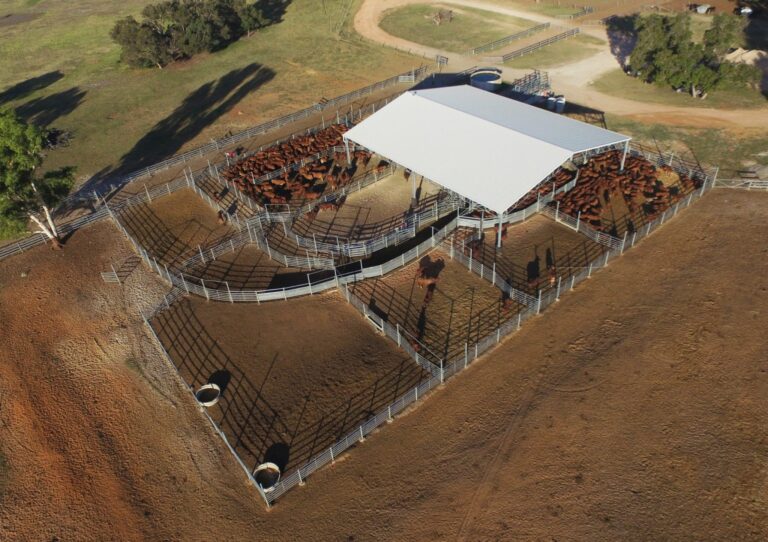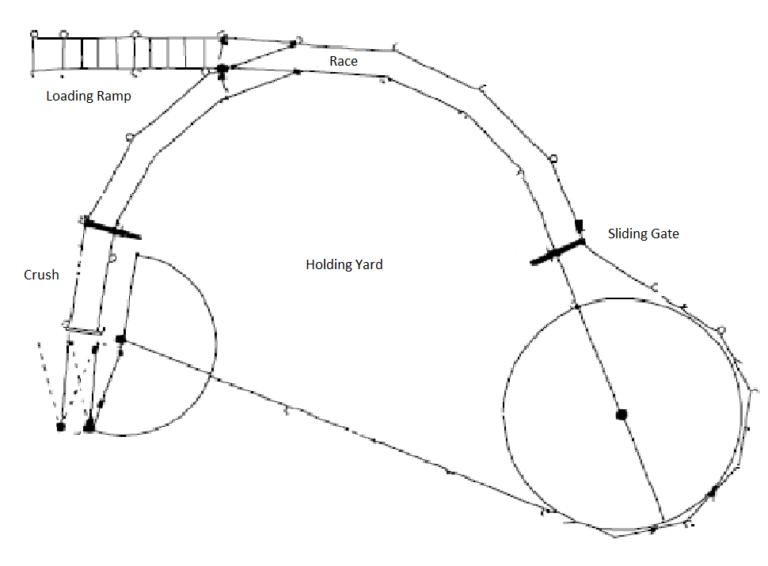Whether you own one animal or thousands, you must have some form of yarding equipment and loading ramps, or access to these facilities.
Well-designed yards and loading facilities allow you to handle and manage your animals in a safe and relatively stress-free manner. These facilities are essential for you to tag livestock, administer vaccines and medication, conduct vet inspections, and (un)load livestock onto transportation.
When establishing or reviewing yarding and loading facilities for livestock, it is best to first consider what setup will:
- Be practical?
- Be safest for you?
- Maximise the welfare of your animals?
- Address all legal requirements?
Designing a Yard and Loading Facility
These are some of key elements that you will need to consider when designing or reviewing your animal handling facility.
1. Site & Location
Make sure you consider the following:

Once you have chosen your site, ensure that you have obtained all the building/structural permits you’ll need.
For sheep, consider the proximity and location of shearing sheds and dip.
2. Animal Needs
How a facility is designed should take into account how animals move. Using elements like curved raceways, rubber coverings, and reducing areas where animals move from light to shade can make it more comfortable for them to move around.
Sheep can cope well with one change of status at a time – go up a ramp; go onto the flat landing; go through a gate; go around a corner; go into a shed or a truck. Do not try to get sheep to do more than one change of status at a time or they become hesitant and cause a blockage in movement pathways.
3. Yarding Construction Materials
Choose materials that will be the most sturdy, durable and safe for your needs and usage, ensuring they also don’t injure the animals (e.g. round/oval railings) but can handle the strength of the animals you’re working on. Make sure the materials are also easy to clean.
For pens where animals may be held for longer periods, the surface should be softer to prevent foot soreness.
For ramps/raceways, floors should enable good grip so animals don’t slip.
4. Signage
Ensure there is suitable signage for transporters to know where to go and make sure your biosecurity signs are up to date.
Read up on the changes to biosecurity signage legislation here and how it affects trespassers.
5. Storage and Other Features
Products, such as vaccines, are often needed near yards, so including a suitable, lockable facility in the design (such as a fridge or locker) will be helpful.
You should consider whether you will require specific sheep or cattle drafting facilities or features such as:

Occupational Health and Safety Considerations
Working cattle and sheep in an intensive setting increases your OH&S risk. Cattle especially have a significant weight advantage over a human, and combined with stress or fear, this can significantly increase risks to the safety of both you and the animal.
There are many factors you should consider reducing the risk of injuries including:
- Non-slip and well-draining floors to minimise the risk of anyone slipping and/or falling.
- Gates should be well greased and with good latches to ensure that they can be closed quickly and effectively.
- A sheltered area for staff to avoid heat exhaustion and health risks
- Appropriate facilities for rubbish disposal.
- Avoid putting head/legs/arms into a raceway while animals are moving through it.
- Eliminate sharp or protruding objects (e.g. from railings) to prevent injuries.
- Avoid bending or reaching over an animal’s head.
- Minimise use of dogs, electric prodders, loud noises and flapping clothing.
- Have hard copies of the material data safety sheets (MSDS) for the chemicals you use.
- Lockable facilities (fridges or lockers) will provide a secure environment for vaccines and other chemicals. Ensure that food is NOT stored in them.
- Have a plan of what to do in the case of an emergency. Ensure there are enough well positioned emergency exit points from yards.
Understanding why and how animals move, will significantly assist you in handling animals effectively, humanely and safely. Ensure that you always use best practice animal handling techniques and that your employees do the same.
Transporting

Transporting animals, even when done in accordance with best practice procedures is stressful for animals. To minimise stress, and ensure you comply with the law and best practice, some important things to consider include:
- Be in attendance when the truck is loaded, and ensure that humane practices are employed
- Ensure the truck is appropriate for the task
- Observe recommended trucking densities
- Ensure animals are healthy and Fit to Load
- Any animals from different paddocks that need to be mixed – ensure it is done at least three weeks in advance to allow them to get used to each other and reduce stress. Avoid mixing with animals from other properties
- Yard animals 2-3 hours before loading to allow animals to settle
- If possible, load horned animals separate from polled animals
- Load animals of a similar weight to each other
- Ensure that you have all appropriate paperwork completed eg. NVD’s
- Be especially careful with young animals. For example, don’t pull or lift lambs by the wool
Notes
If possible, visit you neighbour’s yards as they may be able to provide you with advice. Your stock agent would be another good person to talk to.
Further Resources
- Agriculture Victoria
- National Stock Yards
- Department of Primary Industries
- Animal Welfare Standards – Guide for Safe Design of Livestock Loading Ramps and Forcing Yards PDF
- WorkSafe
Click here to download a PDF version.
For further information, please contact the VFF Livestock Group on 1300 882 833 or by email [email protected]



